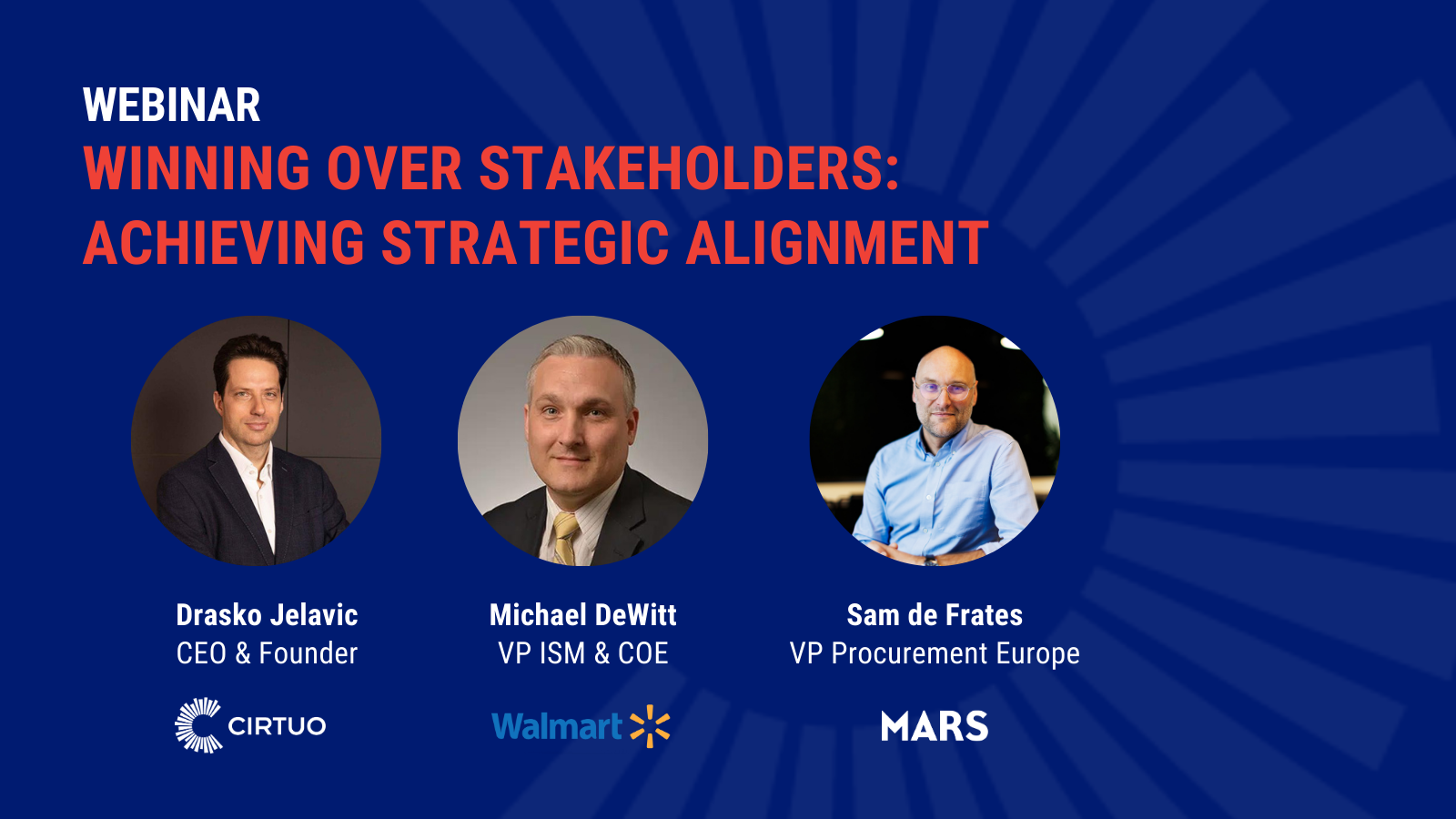Procurement challenges in 2023 predicted by Cirtuo
Many procurement professionals are preparing to face the following significant procurement challenges in 2023. First, there is an obvious notion of change transforming procurement, which I observed while meeting many procurement professionals at DPW and ProcureCon EU last September.
In many cases, accelerated by external circumstances, procurement is gaining clout within the organizations the function serves. Finally, procurement has a permanent seat at the table that it’s fought hard to earn. The delivery of final goods and services would be impossible these days without an insight into the supply chain. Procurement is a part of top management discussions; procurement stakeholders can finally understand and see procurement’s value as a function that goes far beyond delivering cost reductions.
What are the top 3 Procurement challenges in 2023?
Here are my top 3 observations from the last two weeks about what procurement challenges we are facing now and, no doubt, what the industry will face in 2023:
1) Increased insight: the procurement community became more self-critical. In the last two years of the “new normal,” turbulence (a pandemic and war) gaps have been exposed in organizational development, requiring re-evaluation of priorities. I have rarely heard so many mentions of “immature organization .” In parallel, the usage of “business requirements” in the language of procurement professionals increased significantly. Decades of cost reduction focus are behind us. Procurement professionals are invited to help write the function’s new chapter and define its strength of purpose.
2) Need for agile strategy: supply chain disruptions force procurement to act as a firefighter, this time with a lot of top management’s attention. As a result, resources are being wasted on operational and tactical activities. Yet, agile strategies are needed at all levels to address constantly changing market challenges and business requirements. Strategy for procurement function, for categories, suppliers, and risks, as a strategy for procurement transformation. “Strategy” is another keyword used more frequently than ever.
3) Crossing the chasm: a struggle between firefighting and strategy is a chasm. Lack of resources/skills/budget, shifting priorities, and slow progress in technology adoption make it challenging to get there. Consultants are busier than ever. They report accelerated transformations, digital roadmaps even outsourcing of procurement (for those companies with no procurement focus). More mature software solutions will support many procurement processes to help organizations cross the chasm.
I believe that crossing the chasm is possible by advocating a strategic transformation or procurement (not only digital transformation) for decades. Increased attention of top management on supply chain and sustainability requirements requires more focus and budget for procurement. Although we observe large corporations moving in that direction, medium and smaller enterprises find it harder to catch up.
The new exciting role of a CPO as a procurement CEO is best described in my interview with Cyril Pourrat from BTSourced, which can be viewed by following the link here.





